Search
Remove Ads
Advertisement
Summary 
Loading AI-generated summary based on World History Encyclopedia articles ...
Search Results

Definition
William the Conqueror
William the Conqueror (c. 1027-1087), also known as William, Duke of Normandy, led the Norman Conquest of England in 1066 when he defeated and killed his rival Harold Godwinson at the Battle of Hastings. Crowned King William I of England...
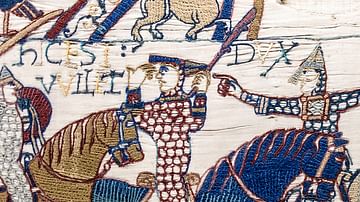
Article
William the Conqueror's Harrying of the North
By the end of 1066 CE William the Conqueror had won a decisive victory at the Battle of Hastings, subdued the south-east of England and been crowned King William I in Westminster Abbey but there remained rebellion in the air throughout 1067...
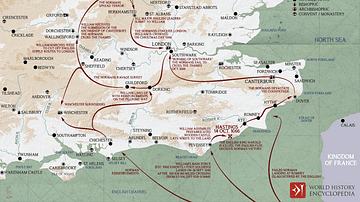
Article
William the Conqueror's March on London
William the Conqueror (r. 1066-1087 CE) was victorious at the Battle of Hastings in October 1066 CE, and Harold Godwinson, King Harold II of England (r. Jan - Oct 1066 CE) was dead. The English throne and kingdom were there for the taking...
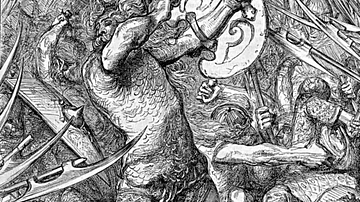
Article
William the Conqueror & the Ely Rebellion
By early 1070 CE William I (r. 1066-1087 CE) had almost completed the Norman conquest of England. There remained threats from the border regions with Wales and Scotland but the north of England had finally be subdued by the ruthless harrying...

Image
William the Conqueror's March on London 1066
A map illustrating the campaign of William the Conqueror (Duke of Normandy) in Britain aiming to capture London and secure control of the Kingdom of England (which, Willaim claimed, had been promised to him by Edward the Confessor, the childless...

Image
William the Conqueror, Bayeux Tapestry
A scene from the 11th century CE Bayeux Tapestry showing William the Conqueror (second figure from the left) at the Battle of Hastings in 1066 CE. (Centre Guillaume le Conquérant, Bayeux, France)

Image
William the Conqueror on Horseback, Bayeux Tapestry
A depiction of William the Conqueror, aka William I (r. 1066-1087 CE) from the 11th century CE Bayeux Tapestry. (Centre Guillaume le Conquérant, Bayeux, France)
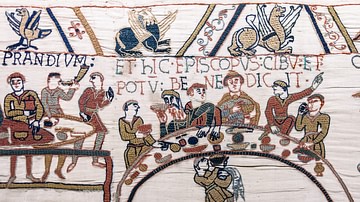
Image
Feast of William the Conqueror
A scene from the 11th century CE Bayeux Tapestry showing the celebratory feast of William the Conqueror after the Battle of Hastings in 1066 CE. In the centre is Odo, Bishop of Bayeux and probable patron of the tapestry. (Centre Guillaume...
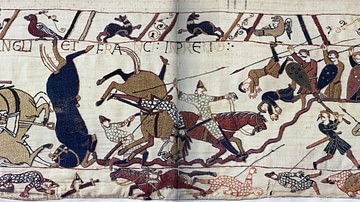
Definition
Norman Conquest of England
The Norman Conquest of England (1066-71) was led by William the Conqueror who defeated King Harold II at the Battle of Hastings in 1066. The Anglo-Saxon elite lost power as William redistributed land to his fellow Normans. Crowned William...

Image
Statue of William the Conqueror
A modern statue of William the Conqueror, Duke of Normandy (r. 1035-87 CE) and king of England as William I (r. 1066-87 CE). In Falaise, Normandy, France. Sculpted by Louis Rochet (1818-1873) in 1851 CE.